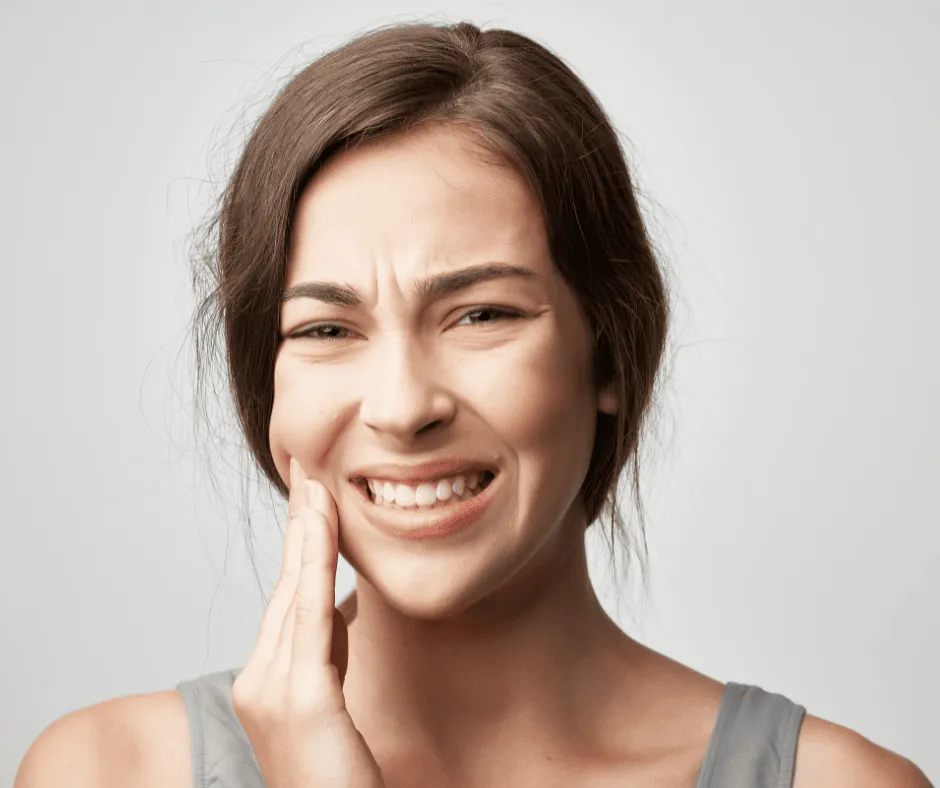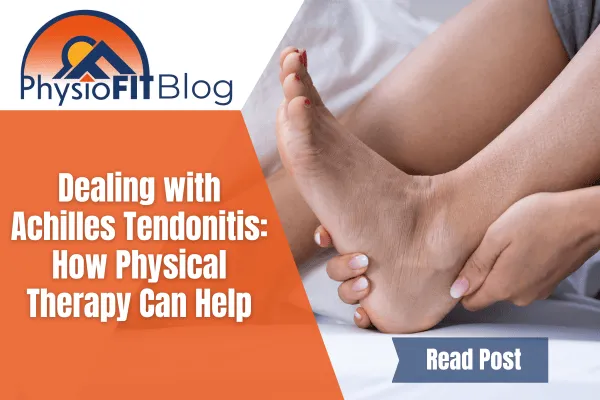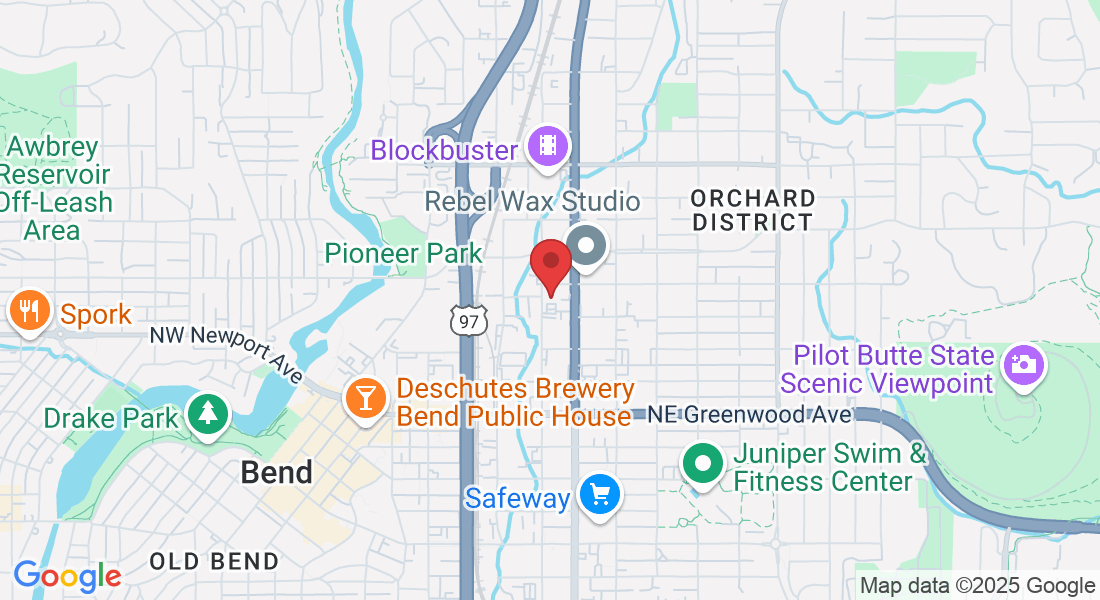TMJ Relief
Unlock Relief From TMJ Pain
If you're struggling with discomfort and dysfunction in your jaw, you've come to the right place. Temporomandibular joint (TMJ) disorders, or TMD, as they are also known, can severely impact the quality of your life, leading to significant jaw pain, headaches, and hindrances in performing simple tasks like opening and closing your mouth. By diving deeper into understanding the complexities of TMJ disorders, we're equipped to provide innovative and tailored physical therapy solutions for effective TMJ pain relief.
Experience TMJ Relief like Never Before with PhysioFit: We take a deeply personalized approach to your health, comprehending that every TMJ pain sufferer requires a unique treatment plan. Leveraging the power of evidence-based, fitness-driven physical therapy in bend, we strive to offer more than temporary relief. We aspire to improve your overall well-being, stave off persistent pain and accelorate your recovery process, allowing you to effortlessly resume your normal life.
What You Should Know
Healthcare providers classify TMDs into three categories:
Disorders of Your Jaw Joints: These involve complications in the jaw joints themselves, often manifesting as clicking, popping, or grating sounds during jaw movement.
Disorders of Your Chewing Muscles: This category includes issues related to the muscles responsible for chewing, where patients may experience persistent or intermittent muscle pain.
Headaches That Result From TMD: A significant fraction of TMD sufferers may experience headaches or migraines as a consequence of jaw joint or muscle dysfunction, significantly affecting their quality of life.
A proper diagnosis of a TMJ or TMD problem involves a thorough evaluation from a professional.

Some of The Most Common Causes of TMJ Pain
The onset of TMD isn't attributed to one solitary cause. Instead, it tends to emerge from a diverse array of factors, often in combination.
Jaw injury: Injuries such as a broken or dislocated jaw can directly affect the temporomandibular joint, leading to TMJ disorders. Such physical trauma can disrupt the alignment and smooth functioning of the jaw joint, inducing pain and discomfort.
Teeth Grinding or Clenching (bruxism): Frequent teeth grinding or clenching, often a subconscious habit during sleep or periods of stress, can exert excessive pressure on the TMJ, contributing to its dysfunction. Over time, this can lead to wear and tear, causing persistent pain and other TMJ-related symptoms.
Arthritis in Your Jaw Joint: Arthritis, an inflammatory condition, can affect any joint in your body, including the TMJ. The inflammation and degeneration associated with arthritis can cause joint pain and stiffness, impairing normal jaw movement.
Malocclusion: Malocclusion refers to the misalignment of teeth when the jaws are closed, which can put additional strain on the TMJ. This imbalance can force the jaw joint to work harder to achieve efficient biting and chewing, increasing the risk of TMJ disorders.
Stress: High levels of stress can lead to physical manifestations such as increased muscle tension or clenching of teeth, both of which can place undue strain on the TMJ. Chronic stress can exacerbate these physical responses, thereby contributing to TMJ pain and dysfunction over time.
If any of this information resonates with your current situation, we urge you to schedule an appointment with us immediately. Don't let hip pain diminish your life quality - allow us to help you embark on the path to relief today.
Can I Prevent TMD or TMJ Pain?
While it's true that certain risk factors contributing to TMJ dysfunction are beyond our control, there are still practical steps you can take to minimize the likelihood of developing this condition:
Make Use of a Mouth Guard During Sleep: Nighttime teeth clenching or grinding, known as bruxism, can significantly contribute to TMJ dysfunction. By wearing a mouth guard as you sleep, you can effectively mitigate this risk, protecting your jaw joints from undue pressure.
Ensure You're Protected in High-Risk Situations: When participating in contact sports, your facial area is more susceptible to injuries. Utilizing a mouth guard during such activities can offer invaluable protection for your jaw, reducing the risk of TMD.
Prioritize Maintaining Good Posture: The alignment of your neck and head plays a vital role in the functioning of your jaw. By ensuring good posture, you can maintain optimal alignment, thereby reducing strain on your TMJ.
Embrace Stress Reduction Practices: Stress can lead to unconscious habits such as jaw clenching, which can exacerbate or lead to TMD. Techniques such as meditation or mindfulness exercises can help manage your stress levels, offering indirect yet essential protection against TMJ dysfunction.

Common Symptoms of TMJ Pain
Jaw Tightening or Stiffness
Jaw Pain
Jaw Clicking or Popping
Trouble Closing or Opening Your Mouth.
Headaches or Migraines
Earaches or Toothaches
Ringing in Your Ears (tinnitus)
Teeth Fitting Together Differently (malocclusion)
Remember, if you resonate with any of the symptoms or conditions mentioned, we highly recommend making an appointment with us for a thorough evaluation and personalized treatment plan.
Please Note: The information provided on our website is intended for general education and is not a substitute for professional medical advice. Each individual's situation and body is different. Therefore, what may work for one person may not work for another. We care about your well-being and advise you to reach out to us to discuss your specific needs before implementing any advice from our website.
Your Source for All Things Physical Therapy in Bend Oregon
The PhysioBlog

Dealing with Achilles Tendonitis: How Physical Therapy Can Help
Understanding Achilles Tendonitis
Please Note: The information provided on our website is intended for general education and is not a substitute for professional medical advice. Each individual's situation and body are different. Therefore, what may work for one person may not work for another. We care about your well-being and advise you to reach out to us to discuss your specific needs before implementing any advice from our website.
Introduction
Achilles Tendonitis, an overuse injury that affects the Achilles tendon, is a common condition among runners and middle-aged people who engage in sports activities like tennis or basketball over the weekends. This band of tissue, which connects the calf muscles at the back of the lower leg to the heel bone, can be significantly impacted by this condition. The role of physical therapy in managing Achilles Tendonitis is crucial, and at PhysioFIT, we emphasize a proactive approach to physical therapy in Bend Oregon. Our focus is on optimizing the body's condition to reduce the risk of injury and enhance the healing process. This article will delve into the causes, symptoms, and preventive measures of Achilles Tendonitis, and how physical therapy can be a game-changer in dealing with this condition. (source: Mayo Clinic)
What is Achilles Tendonitis?
Achilles Tendonitis is caused by repetitive or intense strain on the Achilles tendon. This tendon is used when you walk, run, jump, or push up on your toes. The structure of the Achilles tendon can weaken with age or disuse, making it more susceptible to injury, particularly in people who may participate in sports only on the weekends or who have suddenly increased the intensity of their running programs. Symptoms of Achilles Tendonitis include a mild ache in the back of the leg or above the heel after running or other sports activity. More severe pain may occur after prolonged running, stair climbing, or sprinting. (sources: Healthline, WebMD)
Risk Factors and Prevention of Achilles Tendonitis
Several factors can increase your risk of Achilles Tendonitis, including your sex (it occurs most commonly in men), age (it's more common as you age), physical problems (a naturally flat arch in your foot can put more strain on the Achilles tendon), training choices (running in worn-out shoes can increase your risk), medical conditions (people who have psoriasis or high blood pressure are at higher risk), and certain types of antibiotics. Preventive measures include gradually increasing your activity level, taking it easy, choosing your shoes carefully, stretching daily, strengthening your calf muscles, and cross-training.

Physical Therapy in Bend Oregon at PhysioFIT
At PhysioFIT, we offer a comprehensive range of physical therapy services tailored to the needs of those dealing with Achilles Tendonitis. Our approach is proactive, focusing on injury prevention rather than just treatment. We believe that by optimizing the body's condition, we can help reduce the risk of injury and enhance overall wellness. Our physical therapy services for Achilles Tendonitis include a comprehensive assessment of the individual's physical condition, a personalized training program, and ongoing support and guidance. Our goal is to help individuals achieve their best performance while minimizing their risk of injury. With our proactive approach to physical therapy, we aim to empower individuals to take control of their health and fitness, and to enjoy their activities without the fear of injury.
Physical Therapy for Achilles Tendonitis
Role of Physical Therapy in Managing Achilles Tendonitis
Physical therapy plays a pivotal role in managing Achilles Tendonitis. It aids in restoring mobility that might have been compromised due to the disease, injury, or illness. Physical therapists, or PTs, are licensed professionals who work with individuals that have sustained disabilities, impairments, or limitations in their overall physical function and mobility. These deviations can be the result of disease, injury, or illness. Physical therapists may also work with people to help them prevent injuries.
At PhysioFIT, our physical therapists are well-trained and equipped to provide the necessary care and treatment to help patients regain their independence and normal function. We understand that each patient's condition is unique, and we tailor our treatment plans to meet their specific needs and goals.
Physical Therapy Techniques for Achilles Tendonitis
Approaches to Physical Therapy for Achilles Tendonitis
Achilles Tendonitis can be effectively managed through a variety of physical therapy techniques. These methods aim to aid in the healing process, should only be performed with a physical therapist or trained professional, and can include:
Therapeutic Exercise: As experts in movement, physical therapists primarily use exercise to improve mobility and alleviate discomfort. This involves targeted movements designed to enhance strength and flexibility.
Ultrasound Therapy: This technique involves the use of high or low-frequency sound waves directed towards muscles and surrounding tissues. The sound waves promote relaxation and enhance blood circulation to the injured areas, aiding in recovery.
Electrical Stimulation: This method uses electrical currents to stimulate muscle contractions. These contractions not only strengthen the muscles but also enhance blood flow to the affected area, promoting healing.
Massage Therapy: Also known as soft tissue therapy in physical therapy terms, massage helps to reduce muscle tightness and alleviate pain in the surrounding tendons and ligaments. This aids in achieving pain-free movement.
At PhysioFIT, we employ the necessary techniques and more to assist our patients in recovering from Achilles Tendonitis. Our physical therapists are proficient in applying methods effective in treating the root cause of your problem. Many clinics may apply some of these passive modalities as a piece of their approach to rehab.. Don’t expect to see much of this at PhysioFIT. We want to maximize your time and money by utilizing the most evidence based interventions that will truly get you back to where you want to be. The best medicine, we have found, is movement. This is where we come in. We will help you understand the when, how much and the why of how properly dosed movement is the key.
Physical Therapy at PhysioFIT
At PhysioFIT, we are committed to providing top-notch physical therapy in Bend Oregon for Achilles Tendonitis. Our approach is comprehensive, focusing on both the treatment and prevention of injuries. We understand that Achilles Tendonitis can significantly impact an individual's quality of life, and we are here to help our patients regain their normal function and mobility.
Our physical therapists are highly skilled and experienced in managing Achilles Tendonitis. They work closely with each patient to develop a personalized treatment plan that addresses their specific needs and goals. Our treatment plans incorporate a variety of physical therapy techniques.
At PhysioFIT, we believe in empowering our patients to take an active role in their recovery. We provide them with the necessary tools and knowledge to manage their condition effectively and prevent future injuries.

FAQs
How do you rehabilitate Achilles tendonitis?
Rehabilitation for Achilles tendonitis involves a combination of rest, physical therapy, and sometimes medication. Physical therapy plays a crucial role in rehabilitation in that the key comes down to building back those tissues stronger than before. This doesn't happen by icing, throwing on electrical stimulation or ultrasound. While these modalities may be effective to some extent and more so in pain control. It is important to understand that our body responds to mechanical stress. We focus on appropriately dosing rest and work to build your body back stronger than it was before.
How long do you go to physical therapy for Achilles tendonitis?
The duration of physical therapy for Achilles tendonitis varies depending on the severity of the condition and the individual's response to treatment. It can range from a few weeks to several months.
Can physical therapy help my torn Achilles tendon?
Yes, physical therapy can significantly help in the recovery from a torn Achilles tendon. It can help restore strength and mobility to the affected area, reduce pain, and prevent future injuries. However, the severity of the tear will determine the course of treatment. In some cases, surgery may be required, followed by physical therapy.
Conclusion
Achilles Tendonitis, a common yet debilitating condition, can significantly impact an individual's mobility and quality of life. However, with the right approach and treatment, it is possible to manage this condition effectively and regain optimal functionality.
Physical therapy plays a pivotal role in this recovery process. From understanding the intricacies of Achilles Tendonitis, its causes, symptoms, and risk factors, to implementing preventive measures, physical therapy provides a comprehensive approach to dealing with this condition.
Dealing with Achilles Tendonitis can be a challenging journey. However, with the right guidance, support, and treatment plan, recovery is within reach. Physical therapy, particularly at PhysioFIT, can be your ally in this journey, helping you regain your strength, mobility, and the freedom to move without pain.
Please Note: It's important to note that any exercises that are shared should be performed under the guidance of a qualified physical therapist in bend to ensure correct technique and to prevent injuries. A physical therapist can provide a customized exercise program based on the individual's fitness level, goals, and any existing injuries or conditions. If you’d like to explore this more or would like to schedule a time with a physical therapist, contact us atPhysioFITBend.com
Copyright PhysioFIT 2025 . All rights reserved


